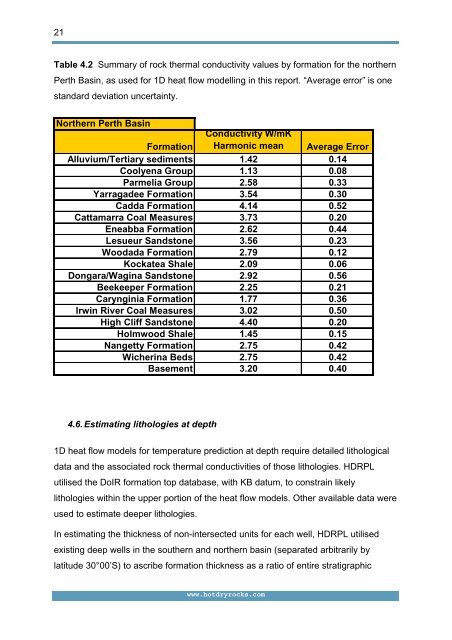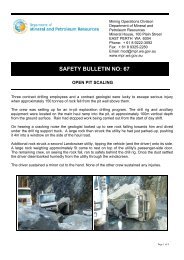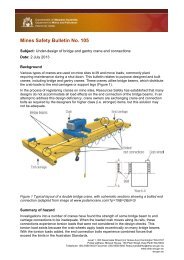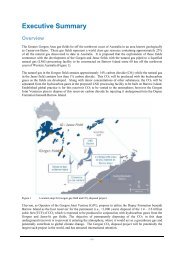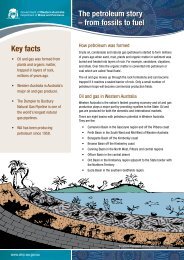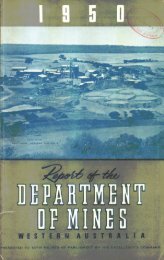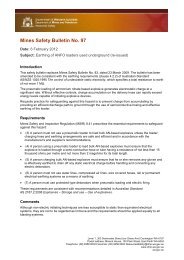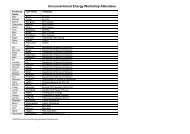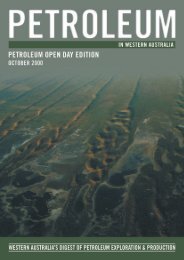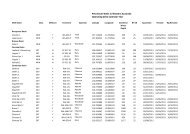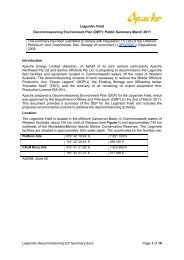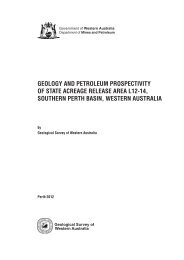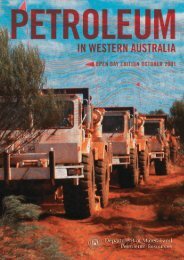Geothermal Energy Potential in Selected Areas of Western Australia ...
Geothermal Energy Potential in Selected Areas of Western Australia ...
Geothermal Energy Potential in Selected Areas of Western Australia ...
Create successful ePaper yourself
Turn your PDF publications into a flip-book with our unique Google optimized e-Paper software.
21<br />
Table 4.2 Summary <strong>of</strong> rock thermal conductivity values by formation for the northern<br />
Perth Bas<strong>in</strong>, as used for 1D heat flow modell<strong>in</strong>g <strong>in</strong> this report. “Average error” is one<br />
standard deviation uncerta<strong>in</strong>ty.<br />
Northern Perth Bas<strong>in</strong><br />
Formation<br />
Conductivity W/mK<br />
Harmonic mean Average Error<br />
Alluvium/Tertiary sediments 1.42 0.14<br />
Coolyena Group 1.13 0.08<br />
Parmelia Group 2.58 0.33<br />
Yarragadee Formation 3.54 0.30<br />
Cadda Formation 4.14 0.52<br />
Cattamarra Coal Measures 3.73 0.20<br />
Eneabba Formation 2.62 0.44<br />
Lesueur Sandstone 3.56 0.23<br />
Woodada Formation 2.79 0.12<br />
Kockatea Shale 2.09 0.06<br />
Dongara/Wag<strong>in</strong>a Sandstone 2.92 0.56<br />
Beekeeper Formation 2.25 0.21<br />
Caryng<strong>in</strong>ia Formation 1.77 0.36<br />
Irw<strong>in</strong> River Coal Measures 3.02<br />
0.50<br />
High Cliff Sandstone 4.40 0.20<br />
Holmwood Shale 1.45 0.15<br />
Nangetty Formation 2.75 0.42<br />
Wicher<strong>in</strong>a Beds 2.75 0.42<br />
Basement 3.20 0.40<br />
4.6. Estimat<strong>in</strong>g lithologies at depth<br />
1D heat flow models for temperature prediction at depth require detailed lithological<br />
data and the associated rock thermal conductivities <strong>of</strong> those lithologies. HDRPL<br />
utilised the DoIR formation top database, with KB datum, to constra<strong>in</strong> likely<br />
lithologies with<strong>in</strong> the upper portion <strong>of</strong> the heat flow models. Other available data were<br />
used to estimate deeper lithologies.<br />
In estimat<strong>in</strong>g the thickness <strong>of</strong> non-<strong>in</strong>tersected units for each well, HDRPL utilised<br />
exist<strong>in</strong>g deep wells <strong>in</strong> the southern and northern bas<strong>in</strong> (separated arbitrarily by<br />
latitude 30°00’S) to ascribe formation thickness as a ratio <strong>of</strong> entire stratigraphic<br />
www.hotdryrocks.com


